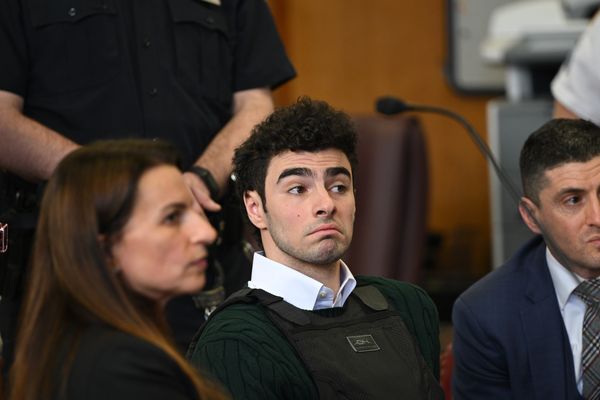A SENIOR official at the Sports Ground Safety Authority (SGSA) has warned that a dramatic increase in the illegal use of pyrotechnics at football matches could end up causing a “mini-Hillsborough”.
Mark Holland, the pyrotechnics lead at the SGSA, was alarmed when Football Policing Unit (FPU) figures released this season showed there has been a significant rise in the use of flares, smoke bombs and strobes at games in England and Wales since the Covid-19 pandemic.
The situation is no different in Scotland – there were coordinated flare displays in the stands before both Viaplay Cup semi-finals at Hampden earlier this month and the start of the Edinburgh derby at Easter Road last Sunday was delayed after smoke bombs were thrown onto the pitch.
A nine-year-old also had to be taken to hospital for treatment after being struck by a flare when Celtic played Real Madrid in the Champions League at Parkhead in September.
Holland, a former police chief superintendent, helped to produce an “educational toolkit” for clubs in a bid to raise awareness of the dangers of pyrotechnics and ensure players, safety officers and staff know how to deal with the problem.
However, he is concerned that the hardcore element among football clubs’ supports, who believe that pyrotechnics improve both the spectacle and atmosphere of a game, remain unaware of the serious ramifications of their actions.
“Pyrotechnic use did increase post-lockdown,” said Holland. “We saw an increase just prior to lockdown and then it really increased after it, as did all disorder at football. The latest UK FPU figures show a 22 to 26 per cent increase this season. And police only attend around half the games which are played.
“A lot of stewards around the world have been maimed dealing with these devices. People have lost hands, eyes, fingers, all sorts of things because they think it is a smoke bomb and then it suddenly goes bang. You don’t know what it is until it has burnt out.
“They can cause breathing difficulties. They are carcinogenic. They are a fire risk as well. A lot of grounds still have wooden stands. They can also cause, panic, distress, overcrowding or a crush. Especially in stadium concourses.
“Sometimes idiots let off multiple flares in concourses. If they are set off in an area of a ground which is enclosed or restricted they cause panic. Stadiums are far safer places now, but pyrotechnics could still cause a mini-Hillsborough.”
Hibernian deployed sniffer dogs when they played Celtic at Easter Road in 2019 following a spate of crowd disturbances at Scottish matches in an attempt to crack down on both illegal drug and pyrotechnic use.
Holland feels that both clubs and broadcasters must take action to eradicate the use of flares, smoke bombs and strobes at games and make stadiums a safe environment for people to watch football in.
“Clubs have to make sure they have the right links to the police and intelligence from the away club around the use of pyros,” he said. “For example, what has the behaviour of the away team’s support been like during the season? Police spotters have all that information.
“Having a dog there to sniff and search people is key. Dogs can’t detect the chemicals in pyrotechnics. They tend to turn out more drugs than pyros. But they are still used as a massive deterrent.
“A club making sure that their search regimes are correct at the point of entry is also key. They can target certain groups or types of supporters in certain sections of the ground.”
Holland added: “What aggravates the situation a little bit is sometimes the BBC, BT Sport or Sky Sports showing flares in the crowd. All sports broadcasters have the use of pyros in their opening credits to a game.
“The commentators will sometimes say: ‘What a great atmosphere!’ They are almost promoting the use of them. They no longer show pitch invaders. But quite the opposite is true when it comes to flares in the crowd.
“People are committing a criminal offence and creating a very dangerous situation with a device that is burning at 2,000 degrees Celsius - and they are almost celebrating that fact. They have quite a responsibility.
“The culture comes from Europe. We have all seen pictures of matches in Poland, the Netherlands and Germany where it looks as if a stand is on fire. It is not acceptable, but it is almost accepted. The fans chant ‘no pyro, no party’. But that is just nonsense.”







